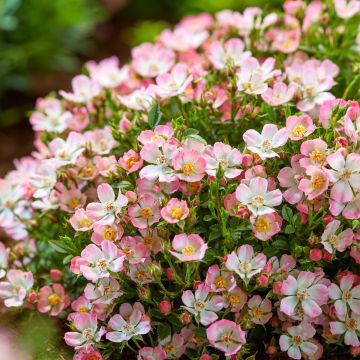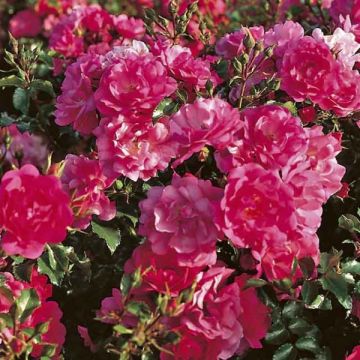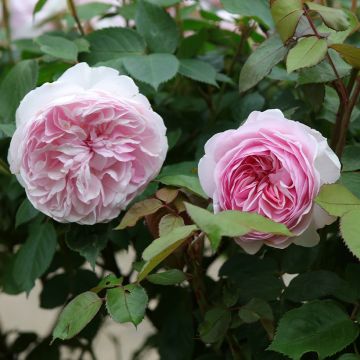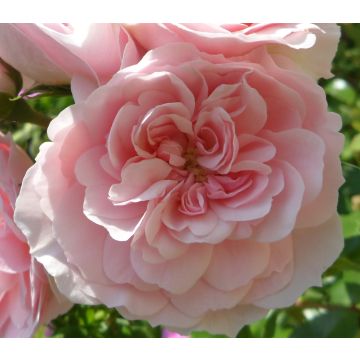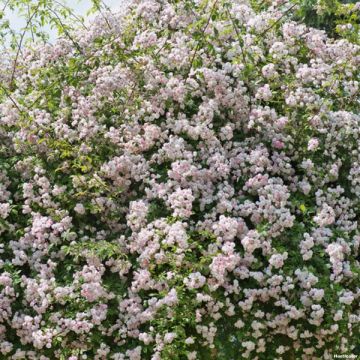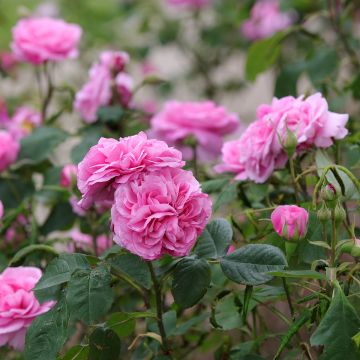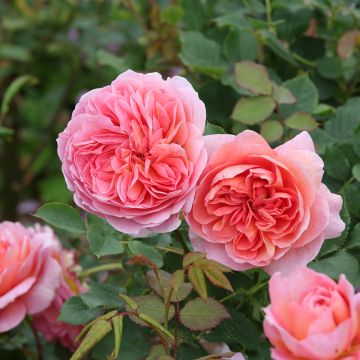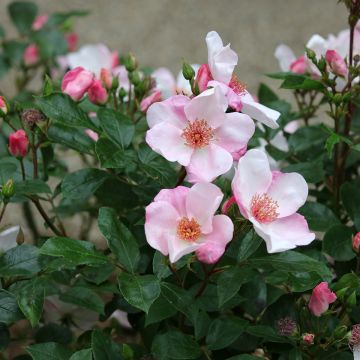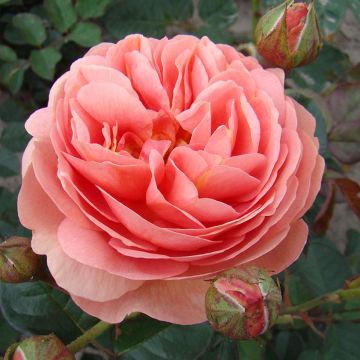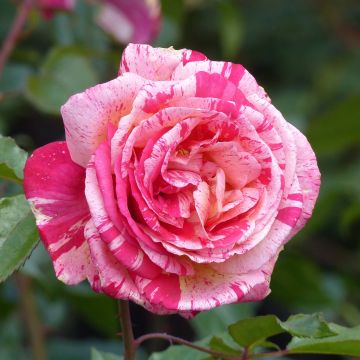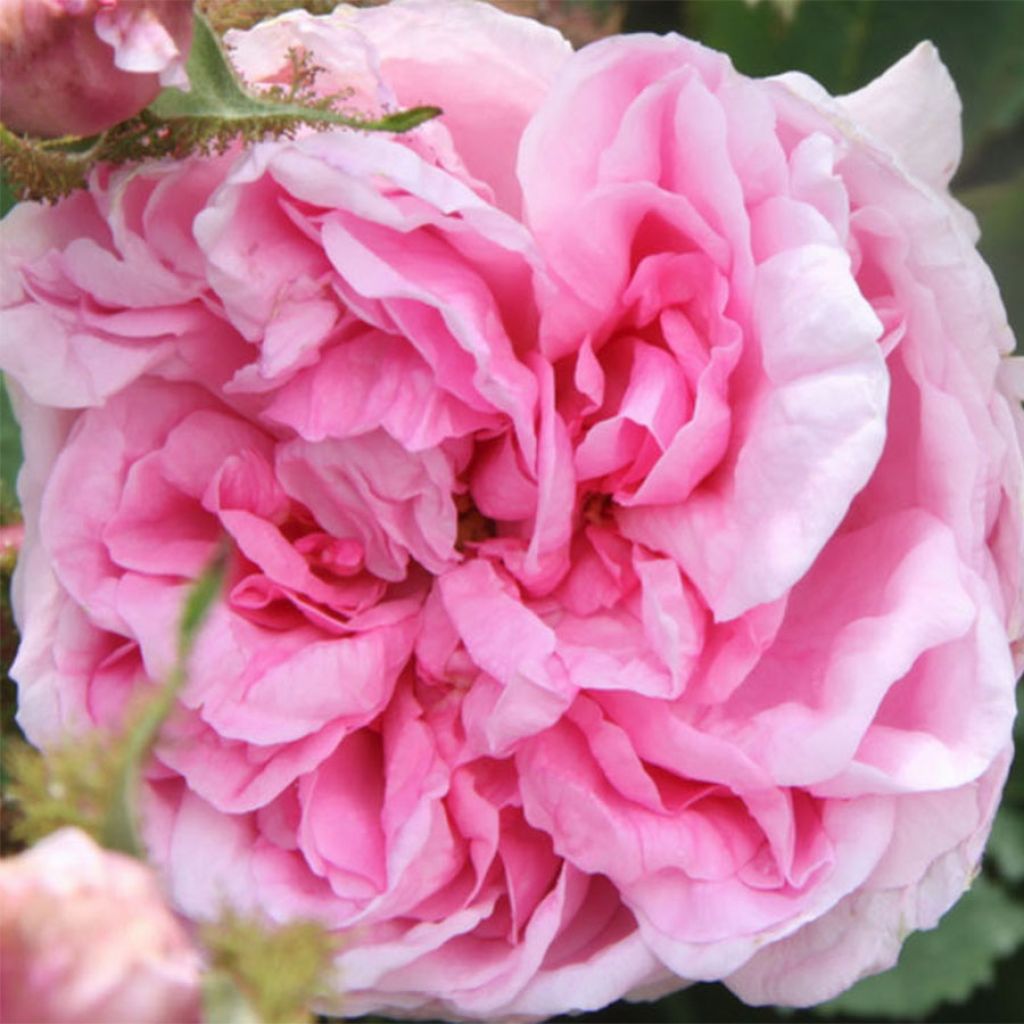

Rosa centifolia Muscosa - White Moss Rose
Rosa centifolia Muscosa - White Moss Rose
Rosa centifolia Muscosa
White Moss Rose
Why not try an alternative variety in stock?
View all →This plant carries a 24 months recovery warranty
More information
We guarantee the quality of our plants for a full growing cycle, and will replace at our expense any plant that fails to recover under normal climatic and planting conditions.
From €5.90 for pickup delivery and €6.90 for home delivery
Express home delivery from €8.90.
From €5.90 for pickup delivery and €6.90 for home delivery
Express home delivery from €8.90.
From €5.90 for pickup delivery and €6.90 for home delivery
Express home delivery from €8.90.
Delivery to Corse prohibited: UE law prohibits the import of this plant from mainland France to Corse as part of the fight against Xylella fastidiosa. Please accept our sincere apologies.
More information
Does this plant fit my garden?
Set up your Plantfit profile →
Description
Rosa x centifolia 'Muscosa' is a simple mutation of the hundred-leaved rose. Its fragrance is unmatched and the countless petals are the main characteristics of this natural variety, which is charmingly called the Moss Rose, May Rose or Dutch Rose. 'Muscosa' forms a slightly gangly bush with a flexible habit, whose branches and even buds are curiously covered with a fragrant and resinous greenish moss, with a balsamic scent. The flowers, which are of a beautiful size and a tender pink colour, are globular when they open, then they unfold into flattened cups around a bud-shaped eye. Its flowering, a bit scattered, extends from June to August, in a sweet scent that is both gentle and sugary, recognizable among all.
This hundred-leaved rose covered with fragrant moss was already blooming in 1699 in Germany, and it has been cultivated in England since 1724. Although its origin has long been controversial, it is commonly accepted that this mutation originated in central Germany. Rosa x centifolia 'Muscosa' is the origin of numerous hybrids obtained by cross-breeding with damask roses and Chinese rose hybrids, of which there are still 150 varieties grouped under the name of "moss roses".
'Muscosa' develops into a slightly loose bush, with a rounded habit, which can reach 1m (3ft 4in) in all directions or more, as it produces new shoots from the stump when grown on its own roots. Its very flexible, arching stems are green and covered with reddish prickles. They bear solitary roses from late spring to August, measuring 8 to 9cm (3.5in) in diameter, with 50 petals arranged in very tight quarters. Their colour is a pure and fresh pink, slightly lighter on the edges, and their scent is powerful, perceptible within several metres. The foliage, greyish green, proves resistant to diseases if the plant benefits from a well-aerated and sunny location. The moss rose is sometimes affected by powdery mildew.
If the passion for botanical roses is not widespread, it is fully justified, particularly in poor soils or under difficult climates: these roses are generally more robust than modern roses and very reliable. Rosa x centifolia 'Muscosa' is a fascinating and precious rose, whose unique fragrance of its soft roses is still cultivated for the perfumery industry. It will find its place in a defensive hedgerow, as it has style and forms a thorny mass that is difficult to cross. It can be associated with Cotinus for autumn colours, lilacs for their spring fragrance, mock oranges for the same reason, with Hibiscus taking over in summer, but also with viburnums and forsythias, which show a very accommodating character. Finally, it is a very hardy bush, which deserves to be placed near a walkway for its unique fragrance and texture.
Report an error about the product description
Rosa centifolia Muscosa - White Moss Rose in pictures
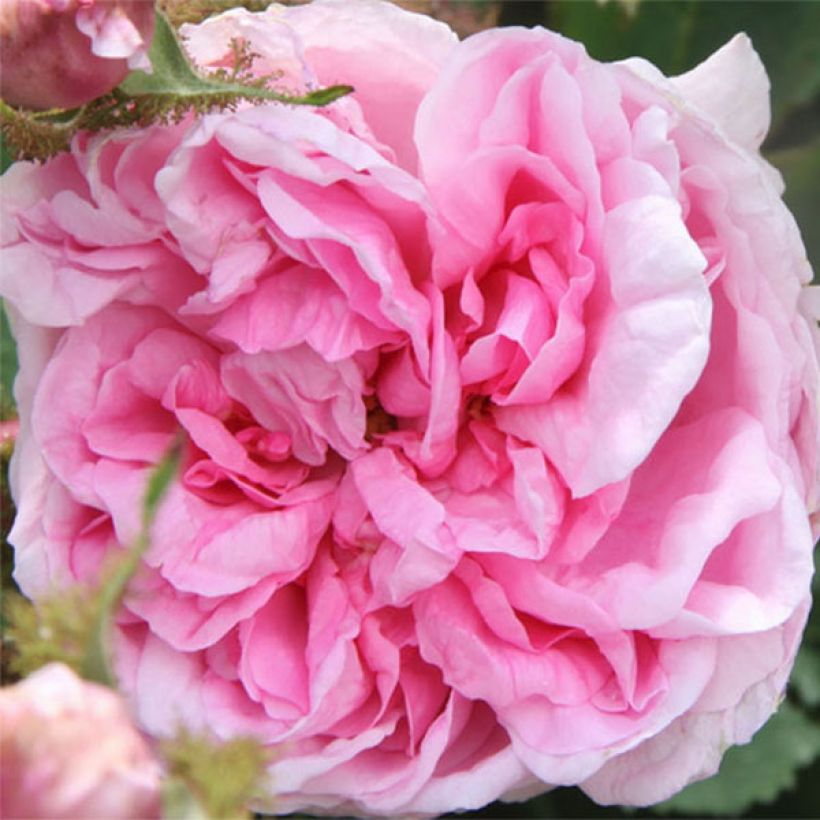

Plant habit
Flowering
Foliage
Botanical data
Rosa
centifolia
Muscosa
Rosaceae
White Moss Rose
Western Europe
Rosa canina Laxa (4L/5L pot, Wrapped bare root)
Other Roses A to Z
Planting and care
The hundred-leaf rose thrives in all regions that are not too hot and is not afraid of cold or rain. It adapts to all types of soil, even sandy soil. Plant it in well-worked and well-drained ordinary soil, and in a sunny or semi-shaded position that it tolerates very well. Very hardy, this rose can withstand -20°C (-4°F).
To plant your rose, whether in a pot or in open ground, prepare your soil to a depth of 25cm (9.8in) by crumbling the soil well and mixing in a planting substrate such as dried blood or dehydrated horn, position your plant free from its pot by covering the top of the root ball with 3cm (1.2in) of soil, fill in and water copiously to remove any air pockets. In dry weather, water regularly for a few weeks to facilitate rooting. Also, remember to provide your rose with special rose fertilizer that stimulates plant flowering. To achieve abundant flowering from your roses, regularly bend and tie the branches. Each bend results in a lateral shoot that ends in a bouquet of flowers. Do not hesitate to use this technique, you will be rewarded. This variety sometimes requires staking due to its very flexible branches that bend under the weight of the flowers.
Roses are often stained or unsightly at the end of summer, but this is not a problem for their development. These spots are not harmful to the rose, it is a natural phenomenon.
Planting period
Intended location
Care
-
, onOrder confirmed
Reply from on Promesse de fleurs
Fragrant Roses
Haven't found what you were looking for?
Hardiness is the lowest winter temperature a plant can endure without suffering serious damage or even dying. However, hardiness is affected by location (a sheltered area, such as a patio), protection (winter cover) and soil type (hardiness is improved by well-drained soil).

Photo Sharing Terms & Conditions
In order to encourage gardeners to interact and share their experiences, Promesse de fleurs offers various media enabling content to be uploaded onto its Site - in particular via the ‘Photo sharing’ module.
The User agrees to refrain from:
- Posting any content that is illegal, prejudicial, insulting, racist, inciteful to hatred, revisionist, contrary to public decency, that infringes on privacy or on the privacy rights of third parties, in particular the publicity rights of persons and goods, intellectual property rights, or the right to privacy.
- Submitting content on behalf of a third party;
- Impersonate the identity of a third party and/or publish any personal information about a third party;
In general, the User undertakes to refrain from any unethical behaviour.
All Content (in particular text, comments, files, images, photos, videos, creative works, etc.), which may be subject to property or intellectual property rights, image or other private rights, shall remain the property of the User, subject to the limited rights granted by the terms of the licence granted by Promesse de fleurs as stated below. Users are at liberty to publish or not to publish such Content on the Site, notably via the ‘Photo Sharing’ facility, and accept that this Content shall be made public and freely accessible, notably on the Internet.
Users further acknowledge, undertake to have ,and guarantee that they hold all necessary rights and permissions to publish such material on the Site, in particular with regard to the legislation in force pertaining to any privacy, property, intellectual property, image, or contractual rights, or rights of any other nature. By publishing such Content on the Site, Users acknowledge accepting full liability as publishers of the Content within the meaning of the law, and grant Promesse de fleurs, free of charge, an inclusive, worldwide licence for the said Content for the entire duration of its publication, including all reproduction, representation, up/downloading, displaying, performing, transmission, and storage rights.
Users also grant permission for their name to be linked to the Content and accept that this link may not always be made available.
By engaging in posting material, Users consent to their Content becoming automatically accessible on the Internet, in particular on other sites and/or blogs and/or web pages of the Promesse de fleurs site, including in particular social pages and the Promesse de fleurs catalogue.
Users may secure the removal of entrusted content free of charge by issuing a simple request via our contact form.
The flowering period indicated on our website applies to countries and regions located in USDA zone 8 (France, the United Kingdom, Ireland, the Netherlands, etc.)
It will vary according to where you live:
- In zones 9 to 10 (Italy, Spain, Greece, etc.), flowering will occur about 2 to 4 weeks earlier.
- In zones 6 to 7 (Germany, Poland, Slovenia, and lower mountainous regions), flowering will be delayed by 2 to 3 weeks.
- In zone 5 (Central Europe, Scandinavia), blooming will be delayed by 3 to 5 weeks.
In temperate climates, pruning of spring-flowering shrubs (forsythia, spireas, etc.) should be done just after flowering.
Pruning of summer-flowering shrubs (Indian Lilac, Perovskia, etc.) can be done in winter or spring.
In cold regions as well as with frost-sensitive plants, avoid pruning too early when severe frosts may still occur.
The planting period indicated on our website applies to countries and regions located in USDA zone 8 (France, United Kingdom, Ireland, Netherlands).
It will vary according to where you live:
- In Mediterranean zones (Marseille, Madrid, Milan, etc.), autumn and winter are the best planting periods.
- In continental zones (Strasbourg, Munich, Vienna, etc.), delay planting by 2 to 3 weeks in spring and bring it forward by 2 to 4 weeks in autumn.
- In mountainous regions (the Alps, Pyrenees, Carpathians, etc.), it is best to plant in late spring (May-June) or late summer (August-September).
The harvesting period indicated on our website applies to countries and regions in USDA zone 8 (France, England, Ireland, the Netherlands).
In colder areas (Scandinavia, Poland, Austria...) fruit and vegetable harvests are likely to be delayed by 3-4 weeks.
In warmer areas (Italy, Spain, Greece, etc.), harvesting will probably take place earlier, depending on weather conditions.
The sowing periods indicated on our website apply to countries and regions within USDA Zone 8 (France, UK, Ireland, Netherlands).
In colder areas (Scandinavia, Poland, Austria...), delay any outdoor sowing by 3-4 weeks, or sow under glass.
In warmer climes (Italy, Spain, Greece, etc.), bring outdoor sowing forward by a few weeks.

































